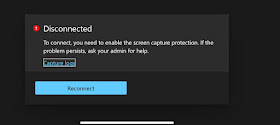As technology advances, the line between local computing and cloud computing continues to blur. Microsoft’s Windows 365, a revolutionary cloud PC service, has introduced an exciting new feature called Windows 365 Switch. This feature seamlessly integrates your cloud PC into the Windows 11 Task View, making the transition between your local desktop and cloud PC effortless. In this blog, we’ll delve into what the Windows 365 Switch is, its benefits, and how to make the most of this powerful feature.
What is Windows 365 Switch?
Windows 365 Switch is a feature within Windows 365 that allows users to add their cloud PC to the Task View of their local Windows 11 machine. Task View, a familiar tool for Windows users, lets you quickly switch between open applications and virtual desktops. With the addition of Windows 365 Switch, you can now easily toggle between your local desktop environment and your cloud PC, providing a seamless hybrid computing experience.
Key Benefits of Windows 365 Switch
1. Seamless Transition
The primary benefit of Windows 365 Switch is the seamless transition it provides between your local desktop and your cloud PC. Whether you're working on a document locally or need to access specialized software on your cloud PC, switching between the two environments is as simple as clicking a button in Task View.
2. Enhanced Productivity
By integrating your cloud PC into Task View, Windows 365 Switch enhances your productivity. You no longer need to log in and out of different systems or manage multiple sets of files manually. Everything you need is just a click away, allowing you to maintain your workflow without interruptions.
3. Consistent User Experience
Windows 365 Switch ensures a consistent user experience across both your local and cloud environments. Your settings, applications, and files are always synchronized, providing a unified workspace that adapts to your needs, whether you're working locally or in the cloud.
4. Flexibility and Mobility
In today’s hybrid work environment, flexibility is crucial. Windows 365 Switch allows you to access your cloud PC from any Windows 11 device, providing the mobility to work from anywhere. This flexibility is especially beneficial for remote workers, freelancers, and teams spread across different locations.
5. Simplified Management
For IT administrators, managing a hybrid workforce becomes simpler with Windows 365 Switch. Centralized management tools ensure that both local desktops and cloud PCs are secure, updated, and compliant with organizational policies. This unified management approach reduces complexity and enhances overall security.
How to Use Windows 365 Switch
Using Windows 365 Switch is straightforward. Here’s a step-by-step guide to get you started:
Step 1: Set Up Windows 365
Ensure you have a Windows 365 subscription and your cloud PC is set up. Follow the setup instructions provided by Microsoft to get your cloud PC running.
Step 2: Access Task View
On your local Windows 11 machine, access Task View by clicking the Task View icon on the taskbar or by pressing `Windows + Tab` on your keyboard.
Step 3: Add Cloud PC to Task View
Open the Windows app, choose one Cloud PC, select the ellipses, and then select Add to Task view.
You can add one or more cloud pc to your Task view, however the first Cloud PC will only be visible in the task view. The others will be arranged in stack and if the first one is removed, the next one will be visible.
https://learn.microsoft.com/en-us/windows-365/enterprise/windows-365-switch-known-issues#support-for-only-one-cloud-pc
Step 4: Switch Between Environments
Click on your cloud PC in Task View to switch to it. You can now work on your cloud PC as if it were a local desktop. To return to your local environment, simply use Task View again and select your local desktop.
Keyboard Navigation:
To use keyboard shortcuts to switch between local pc and cloud pc in task view use the below combination keys.
WIN + Ctrl + left or right arrows
Step 5: Disconnect from cloud pc
To disconnect from a Cloud PC, select the Task view in the taskbar, right-click on the Cloud PC, and then select Disconnect.
Caveats:
you can add more than one Cloud PC to the task view using the Windows app but only one the first one added is ever shown and not the second or third ones.
The Cloud PCs are added in a stack fashion, so if you remove the first CPC you added, the second one will take its place.
What if you have deprovisoned the cloud pc and not able to remove from task view?
Try checking this registry key:
Remove the Reg keys under the below branch and restart explorer.exe or reboot and it should be gone.
HKCU\Software\Microsoft\Windows\CurrentVersion\Explorer\RemoteSystemProviders\
If it doesn’t work, check the windows 365 switch known issues article and follow the same.






.jpg)


